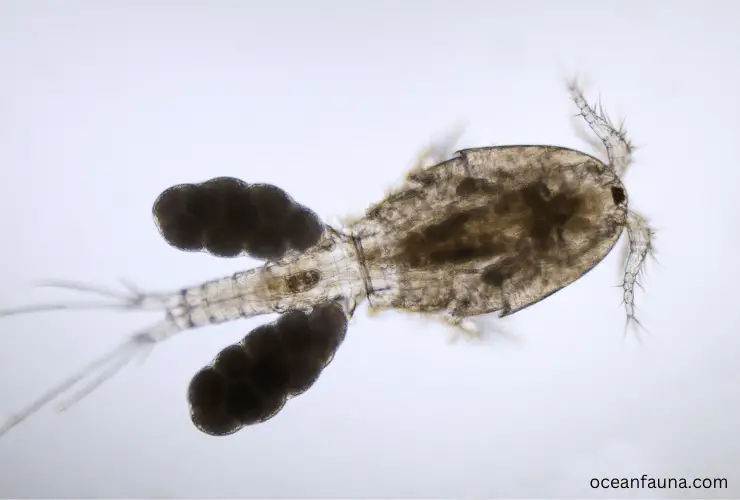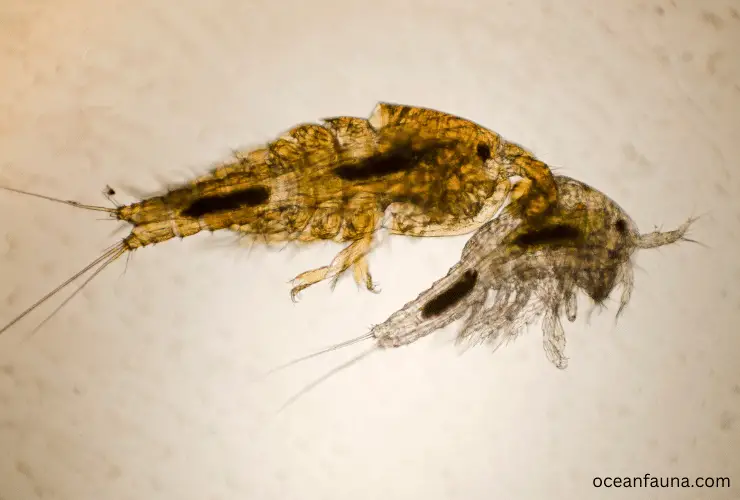Every person who owns an aquarium knows about copepods and knows how to grow copepods. But if you are a newbie, it’s new for you. It’s not just that you can only grow copepods in an aquarium; you can grow copepods in a reef tank, a refugium, or a marine tank as well.
Copepods are a kind of zooplankton and are the food of fish. Before getting copepods, you must get essential supplies and create a new environment for them. How to grow copepods and all aspects of caring for copepods will be covered in this blog. So if you are curious about how to breed them, read thoroughly!
How To Grow Copepods: What Do You Need to Grow Copepods?
Copepods are challenging to grow because they need a marine environment with particular water and temperature requirements to survive. According to one study, copepods thrive at 270 °C (0.438 °F), followed by sets at 250 °C (0.425 °F) and 290 °C (0.361 °F). However, you will also need sufficient food and essential supplies to grow copepods.
Here is how you can grow copepods and all about the essentials:
Essential supplies to grow copepods:
- 5-gallon container or aquarium if you are planning to grow copepods in the aquarium
- Airstone
- Saltwater
- Glycerin free phytopaste
- Sufficient life
Step 1: Filteration
First, fill 1/4th of the container or aquarium with salt water to create an ocean environment for the copepods. Place some air stones and natural filtration plants in the aquarium. Microalgae, Chaetomorpha, Caulerpa, and Halimeda, are recommended.
Step 2: Create the surface
The aquarium should have plenty of surfaces for these tiny crustaceans to graze on, such as old bio balls, live rock, old filter pads, coarse sand, or crushed coral substrates. Make sure your container or aquarium is big enough for them.
Step 3: Put the copepods
Now that the starter culture has been added to the water, it is time to start the air pump, lower the rigid airline into the tank, and set the bubble rate to approximately 2 bubbles per second.
Depending on how much water is in your bucket, add a few drops of phytopaste and gently stir the solution with the rigid tubing already submerged in the solution. The water should be slightly green but not so dark that you can’t see the airline’s bubbles as they move through the water.
Step 4: Rest
Keep the aquarium in full rest mode for a few weeks. After cultivating the copepods, do not add any fish or other animals to the aquarium. To adjust to the aquarium setting, they need some time.
After some weeks, you will see a huge difference in the aquarium. The copepods will grow their population and swim around the aquarium. Make sure the water is still light green and does not get dirty while inspecting them.
Step 5: Fill the whole aquarium/container
After resting for a few days, fill the whole bucket or aquarium with salt water. This will decrease the amount of ammonia in the aquarium, creating a toxic-free environment for the copepods.
Things To Keep in Mind While Growing Copepods
Ensure the room is filled with ambient light for at least 12 hours. Without sufficient light, the copepods will not grow. For every two feet of tank, Algagen recommends adding one 8oz bottle of copepods. For a 4-foot-long tank to have a healthy population, two 8-ounce bottles should be used.
Maintain the salinity of your culture system at the aquarium level, where you will be storing the amphipods and copepods. Check the copepods several times a day with a bright flashlight.
You won’t need to worry about it if you use an in-line refugium with your main tank because the tank water circulates through the rearing system.
Additionally, you can cultivate phytoplankton in a 2-liter plastic bottle to feed your copepods. Online retailers offer a number of comprehensive phytoplankton culturing kits.
How Do You Change Water After Growing Copepods?
You need to change the aquarium water to keep the fish healthy, and the copepods are growing. That is why, to keep copepods healthy, you should change the water once a week.

First, take the whole copepods culture with the help of a 55-micron mesh screen and keep the screen in a separate container filled with water.
Then wipe the whole aquarium water with paper towels. Do not use soap to clean the aquarium; otherwise, the base of the soap can kill the copepods. After wiping the aquarium, fill the aquarium with salt water and place the copepods into them.
FAQs
Do copepods need light?
Without sufficient light, copepods can die. That’s why you need a room where the natural sunlight can come through windows or balconies. You have to keep the room filled with ambient light for 12 hours to keep the copepods alive.
How long does it take for copepods to grow?
It will take at least ten days to two weeks to see copepods growing. Before that, you have to keep the tank away and not add additional things. After ten days, the copepods start to reproduce and grow.
What kills copepods?
Not enough light and a lack of marine environment can kill your copepods. Copepods are the food of big fish. Usually, bigger fish eat copepods to survive. However, keeping the aquarium dirty or not giving it enough light can kill copepods.
How often should I add copepods to my tank?
Adding copepods in your tank every three to four months can help the tank to balance the ecosystem. Usually, it takes 4-6 weeks to multiply the copepods in the tank. And most of them get eaten by fish. That’s why you can add copepods to your tank every three to four months.
How big are copepods?
Copepods are tiny creatures roaming around the ocean. Adult copepods typically have a 1-2mm range of body lengths. Some copepods can be a little bigger in size, such as 17 mm.
Conclusion
Now that you know “how to grow copepods,” you can easily harvest them in your aquarium. You have to keep an eye on the aquarium to ensure the fish survive. You can also use a microscope to ensure your copepods are healthy.
Even though it is tough to maintain copepods for the fish, you can still grow them without anyone’s help.
Don’t worry if you discover that your cultivation is not progressing as expected. It can be challenging to pinpoint the precise cause. Instead of adjusting your current cultivation setup, it might be best to simply start over (and save time and energy).


1 thought on “How To Grow Copepods? Know Everything about Growing Copepods”